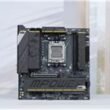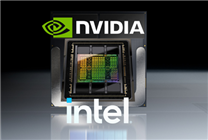Summary:
- NVIDIA and Intel announce collaboration on a new x86 architecture CPU, set to transform the PC market.
- The integration of Intel’s processor architecture with NVIDIA’s RTX GPU will create a groundbreaking platform that challenges existing supply chain dynamics.
- This partnership signals a shift towards a multi-architecture ecosystem, requiring OEMs to adapt to new procurement and integration challenges.
NVIDIA and Intel Forge New Path in CPU Development
On October 6, Kuai Technology reported a major development in the tech industry: NVIDIA and Intel have entered a strategic partnership to create a customized CPU based on Intel’s x86 architecture. This collaboration aims to integrate Intel’s processor technology with NVIDIA’s cutting-edge RTX GPU, leading to the formation of a new generation of integrated platforms.
Industry experts emphasize that this alliance will not only disrupt the current structure of the processor market but also introduce significant procurement and operational complexities for major PC brands like Acer, Asus, and MSI. Historically, the CPU market has been dominated by Intel and AMD, with manufacturers primarily competing for allocations between these two giants. However, the entry of Arm-based competitors like Qualcomm and MediaTek has been gradual, focusing on the Windows on Arm platforms and establishing a third architectural competition in the laptop sector.
With the addition of the NVIDIA-Intel x86 System on Chip (SoC) collaboration, the intricacies of the PC supply chain will undoubtedly increase. Different architectures will necessitate the use of specialized motherboards and cooling solutions, leading to component incompatibility. This will result in redundant development processes and a need for a restructured post-sale service framework.
A thorough analysis reveals that the shift in the OEM supply chain dynamics—from centralized procurement to a more diversified approach—will diminish economies of scale. This transition brings forth challenges concerning coordination among delivery timelines, inventory management, and production schedules.
As NVIDIA ventures into the CPU landscape, the PC ecosystem is evolving from a flexible, open combination of components to a more integrated and less modular architecture. Previously, brands enjoyed the freedom to pair Intel or AMD processors with independent GPUs. With the impending integration of SoC architectures, product design autonomy and cost configurations will be significantly constrained.
Furthermore, the rise of the Arm platform is introducing software fragility, with varying support for drivers proliferating in the market. Manufacturers now face the laborious task of maintaining multiple versions of systems and applications to ensure compatibility across diverse architectures.
Analysts predict that the competitive landscape involving NVIDIA, Intel, AMD, and Arm will redefine the power dynamics of the PC industry supply chain. Initially, brand owners may experience increased costs and integration pressures; however, the long-term forecast suggests that multilateral architectural competition could usher in an era of greater innovation within the PC market.
The implications of this partnership extend beyond hardware. As integrated technologies reshape the ecosystem, the race for optimized performance and efficiency will intensify, prompting a re-evaluation of existing product strategies. As stakeholders navigate these changes, flexibility and adaptability will be key to thriving in this transformative landscape.
In conclusion, NVIDIA and Intel’s collaboration marks a pivotal moment in the evolution of CPU technology, paving the way for future advancements and reinforcing the necessity for brands to rethink their approaches to design, procurement, and market positioning. As the PC industry faces unique challenges precipitated by this partnership, a more innovative and integrated ecosystem may ultimately emerge, benefiting consumers and manufacturers alike.









